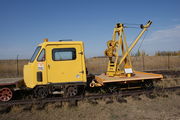Kalamazoo, Michigan
| Kalamazoo, Michigan | |||
|---|---|---|---|
| — City — | |||
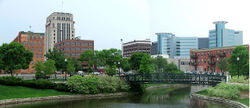 |
|||
|
|||
| Nickname(s): The Mall City, K-zoo, The Zoo | |||
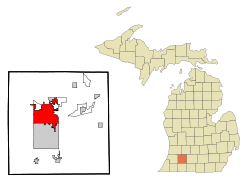 |
|||
| Coordinates: | |||
| Country | United States | ||
| State | Michigan | ||
| County | Kalamazoo | ||
| Settled | 1829 | ||
| Incorporation | 1883 | ||
| Government | |||
| - Type | Commission-Manager | ||
| - Mayor | Bobby J. Hopewell | ||
| - City Manager | Kenneth P. Collard | ||
| Area | |||
| - City | 25.2 sq mi (65.2 km2) | ||
| - Land | 24.7 sq mi (63.9 km2) | ||
| - Water | 0.5 sq mi (1.3 km2) | ||
| Elevation | 784 ft (239 m) | ||
| Population (2000) | |||
| - City | 77,145 | ||
| - Density | 3,125.8/sq mi (1,206.9/km2) | ||
| - Urban | 187,961 | ||
| - Metro | 319,348 | ||
| Demonym | Kalamazooan | ||
| Time zone | Eastern (UTC-5) | ||
| - Summer (DST) | Eastern (UTC-4) | ||
| Area code(s) | 269 | ||
| FIPS code | 26-42160[1] | ||
| GNIS feature ID | 0629439[2] | ||
| Website | www.ci.kalamazoo.mi.us | ||
Kalamazoo (pronounced /ˌkæləməˈzuː/) is the largest city in the southwest region of the U.S. state of Michigan. It is the county seat of Kalamazoo County. As of the 2000 census, the city had a total population of 76,145. It is the major city of the Kalamazoo-Portage metropolitan area, which had an estimated population of 323,713 as of 2008.[3]
Kalamazoo is home to Western Michigan University (often abbreviated as "WMU"), a large public university, and Kalamazoo College (often referred to as "K College"), a liberal arts school located adjacent to WMU's campus. Kalamazoo was home to Nazareth College until its closure in 1991.
Contents |
Name origin
The city is named after the Kalamazoo River[4], but there is uncertainty concerning the origin of the river's name. A number of etymologies (some of them folk etymologies) have been proposed, all of which suggest that the name was derived from the languages of indigenous peoples.
The strangeness of the name's sound to English-speaking ears has helped it to enter into popular culture as a metonym for exotic places worldwide, as in the phrase "from Timbuktu to Kalamazoo". Today, t-shirts are sold in Kalamazoo with the phrase "Yes, there really is a Kalamazoo".[5]
History
| Historical populations | |||
|---|---|---|---|
| Census | Pop. | %± | |
| 1850 | 2,507 |
|
|
| 1860 | 6,070 | 142.1% | |
| 1870 | 9,181 | 51.3% | |
| 1880 | 11,937 | 30.0% | |
| 1890 | 17,853 | 49.6% | |
| 1900 | 24,404 | 36.7% | |
| 1910 | 39,437 | 61.6% | |
| 1920 | 48,487 | 22.9% | |
| 1930 | 54,786 | 13.0% | |
| 1940 | 54,097 | −1.3% | |
| 1950 | 57,704 | 6.7% | |
| 1960 | 82,189 | 42.4% | |
| 1970 | 85,555 | 4.1% | |
| 1980 | 79,722 | −6.8% | |
| 1990 | 80,277 | 0.7% | |
| 2000 | 76,145 | −5.1% | |
| Est. 2008 | 72,179 | −5.2% | |
The area on which the modern city stands was once home to Native Americans of the Hopewell culture, who migrated into the area sometime before the first millennium. Evidence of their early residency still remains in the form of a small mound downtown in Bronson Park. The Hopewell civilization began to decline at some point after the eighth century and was replaced by other groups.[6] The Potawatomi culture was resident in the area at the time the first European explorers arrived.
René-Robert Cavelier, Sieur de La Salle is recorded as having passed through the area, just southeast of the present city, in late March, 1680. The first Europeans to reside in the area were itinerant fur traders in the late 18th and early 19th century. There are records of several traders wintering in the area, and by the 1820s at least one trading post had been established.[7][8]
During the War of 1812, the British established a smithy and a prison camp in the area.[9]
The 1821 Treaty of Chicago ceded all the territory south of the Grand River to the United States federal government. However, the area around present-day Kalamazoo was reserved as the village of Potawatomi Chief Match-E-Be-Nash-She-Wish. Six years later, as a result of the 1827 Treaty of St. Joseph, the tract that became the city was also ceded.
In 1829, Titus Bronson, originally from Connecticut, was the first white settler to build a cabin within the present city limits.[10] He platted the town in 1831 and named it the village of Bronson (not to be confused with the much-smaller Bronson, Michigan about fifty miles (80 km) to the south-southeast).
Bronson was frequently described as "eccentric" and argumentative and was later run out of town. The village of Bronson was renamed Kalamazoo in 1836 (due in part to an incident resulting in Bronson's being fined for stealing a cherry tree).[4] Today, a hospital and a park, among other things, are named after Titus Bronson.
Kalamazoo legally incorporated as a village in 1838 and as a city in 1883.
On August 27, 1856, Abraham Lincoln spoke at a rally in Kalamazoo's Bronson Park, promoting the presidential candidacy of John C. Fremont, who was running on the ticket of the newly formed Republican Party. The occasion marks Lincoln's only visit or public address within the State.
The Kalamazoo Mall, the first outdoor pedestrian shopping mall in the United States, began with the closing of Burdick Street to auto traffic in 1959. The four block long mall, stretching from Lovell Street on the South to Eleanor Street on the north, has been restyled to match the attributes of the Arcadia Commons development, where the new Kalamazoo Public Museum anchors the north end of the mall. In 1999, however, two blocks of the mall were modified to accommodate auto traffic after a period of political debates on the issue.[11] The creation of the mall gave Kalamazoo the name of "Mall City."
In the Fall of 1971, the Kalamazoo Public Schools system was ordered by a federal judge to be integrated after he found the school system to be unlawfully segregated. The judge's determination was the culmination of nearly a decade of racially charged incidents and protests, included several city-wide school closures. A program of two-way busing was implemented in September 1971, in which the city's black students were transported from downtown Kalamazoo in the north and east sections of the city to predominantly white neighborhoods on the west side, and vice versa. The program was closely watched by education experts as the city's population more closely mirrored the demographic make up of the United States as a whole than any other jurisdiction. The busing program continued through the late 1990s.
Beginning in 1971, numerous white families moved from the Kalamazoo Public Schools to adjacent districts, particularly Portage Public Schools to the south and Mattawan Consolidated School to the west. Despite a nearly 10 percent population reduction over the next two decades, the integration plan was more successful than in other large Michigan districts where "white flight" was more severe.
Downtown Kalamazoo was struck by an F3 tornado on May 13, 1980, killing 5 and injuring 79.[12]
 North Burdick St. in 1908 |
 Academy St. in 1908 |
 Old public library in 1908 |
 Paper mills in 1908 |
Geography
The city is situated mainly on the southwest bank of a major bend in the Kalamazoo River, with a small portion, approximately 2.8 square miles (7.3 km2), on the opposite bank. Several small tributaries of the river, including Arcadia Creek and Portage Creek, wind through the city. The northeastern portion of the city sits in the broad, flat Kalamazoo Valley, whilst in the western portions the terrain becomes a series of low hills spreading out to the west and south. Several small lakes are found throughout the area.
According to the United States Census Bureau, the city has a total area of 25.2 square miles (65 km2), of which 24.7 square miles (64 km2) is land and 0.5 sq miles (2%) is water.
The city's suburban population is located primarily to the south, in the city of Portage, and to the west in Oshtemo Township and Texas Township, Michigan.
At least part of the municipal water supply for Kalamazoo is provided by the watershed contained within the Al Sabo Preserve[13] in Texas Charter Township, Michigan, immediately southwest of Kalamazoo.
Another watershed, Kleinstuck Marsh,[14] is very popular with hikers and birdwatchers. Kleinstuck Marsh is located south of Maple Street, between Westnedge Avenue (Kalamazoo's major north-south artery) and Oakland Drive.
Demographics
As of the census[1] of 2008, there were 76,145 people, 29,413 households, and 14,353 families residing in the city. The population density was 3,125.4 inhabitants per square mile (1,206.7 /km2). There were 31,798 housing units at an average density of 1,288.2/sq mi (497.5/km²). The racial makeup of the city was 70.77% White, 20.64% Black or African American, , 0.58% Native American, 2.39% Asian, 0.06% Pacific Islander, 2.38% from other races, and 3.18% from two or more races. 4.28% of the population were Hispanic or Latino of any race.
There were 29,413 households out of which 24.9% had children under the age of 18 living with them, 30.6% were married couples living together, 14.7% had a female householder with no husband present, and 51.2% were non-families. 34.8% of all households were made up of individuals and 9.6% had someone living alone who was 65 years of age or older. The average household size was 2.30 and the average family size was 2.99.
In the city the population was spread out with 20.3% under the age of 18, 27.6% from 18 to 24, 26.8% from 25 to 44, 15.2% from 45 to 64, and 10.1% who were 65 years of age or older. The median age was 26 years. For every 100 females there were 93.1 males. For every 100 females age 18 and over, there were 89.9 males.
The median income for a household in the city was $31,189, and the median income for a family was $42,438. Males had a median income of $32,160 versus $25,532 for females. The per capita income for the city was $16,897. About 13.6% of families and 24.3% of the population were below the poverty line, including 26.0% of those under age 18 and 11.3% of those age 65 or over.
Government
Kalamazoo government is administered under a Commission-Manager style of government. The City Commission is the representative body of the city, and consists of seven members, elected on a non-partisan basis every two years. Whoever receives the most votes during an election becomes the council president and ceremonial mayor of the city. The member that receives the second highest number of votes becomes vice mayor.[15] The current mayor, Bobby J. Hopewell, was elected November 13, 2007, beating Hannah McKinney, who automatically became vice mayor.[16]
In the November 3, 2009, election voters returned Hopewell as mayor and McKinney as vice-mayor.
The City Manager is the city's chief administrative officer. The manager is hired by, and answers to, the City Commission.
Neighborhoods
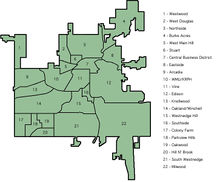
The city of Kalamazoo is commonly divided into twenty-two neighborhoods, many of which are served by a neighborhood association. The Neighborhood Development Division of the city's government works with these associations to invest federal, state, and local funds, including those from the Community Development Block Grant program, in community improvements and economic growth.
There is a great diversity in the character of the neighborhoods. Closer to the city center are historical residential areas such as Stuart, full of Victorian and Queen Anne homes. Neighborhoods in the south west corner of the city are home to the wealthier inhabitants and contain modern developments with more open spaces. The Central Business District and the neighborhoods to the south along Westnedge Avenue (Westnedge Hill, Southside, Vine, and South Westnedge) contain much of the area's retail shopping, mixed with a residential populace. Just west of downtown are the campuses of Kalamazoo College and Western Michigan University, surrounded by several blocks of student housing. Neighborhoods north and east of the city center tend to be lower income. The city's Hispanic population is concentrated on the south and east side, in the Edison neighborhood. The Edison neighborhood is also becoming a center for the city's gay and lesbian community.
Education
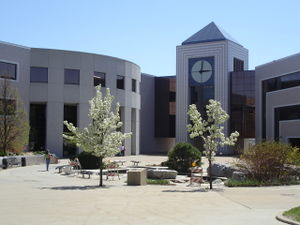
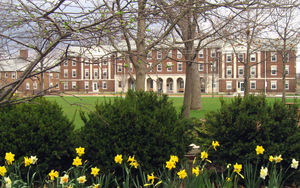
Kalamazoo is home to Western Michigan University. The college has four campuses in Kalamazoo, (West Campus, East Campus, Parkview Campus and Oakland Drive Campus) as well as several satellite campuses throughout Michigan. West Campus, located just west of downtown, has by far the largest concentration of university students, programs and school services. The school is one of the 50 largest universities in the nation, and one of the top 100 public universities in the country. In 2005, the university had over 26,000 students and employed over 1,200 faculty. Also in 2005, Western Michigan ranked #2 Wireless Campus in the U.S. in a national survey done by the Intel Corporation. [17]
Western Michigan University is also the home of the International Congress on Medieval Studies, held each year in May, and organized by the Medieval Institute. The Congress brings some 3,000 professors and students from around the globe to present and discuss a variety of topics on the Middle Ages. Graduate students play an important role in its organization.
Kalamazoo College, one of the first educational institutions in the state of Michigan and a pioneer in the field of coeducation, resides next door to WMU. The school was ranked #1 in Study Abroad programs by US News & World Report 2003 Edition America's Best Colleges, with 80% of students spending at least one term abroad. It was also the #1 school in 2005 for recruitment into the Peace Corps (per capita).
Kalamazoo is home to Kalamazoo Valley Community College, Davenport University, and Kalamazoo Area Mathematics and Science Center (KAMSC). It had also been the home of Nazareth College, which closed in 1992.
The public schools are managed by Kalamazoo Public Schools. Every resident graduate of the Kalamazoo Public Schools is provided with a scholarship for up to 100% of tuition and mandatory fee costs for four years at any public university or community college in Michigan, starting with the class of 2006. This program is known as the Kalamazoo Promise. Books and room and board are not included.[18]
Economy
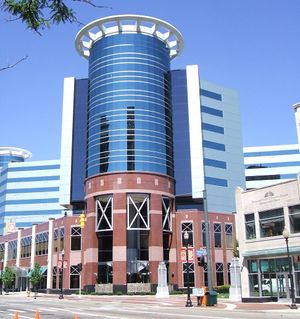
Breweries
Kalamazoo has several popular local breweries and brewpubs producing a variety of beer styles, from light bodied wheat ales to stouts and barley wines.
The most well known is Bell's, originally established as the Kalamazoo Brewing Company in 1985 by its founder, Larry Bell.[19] The brewery has expanded from its original Kalamazoo location, which houses the Eccentric Cafe, to a modern, state-of–the-art brewery located in nearby Comstock. Bell's beer can now be found at retailers in many parts of the country.
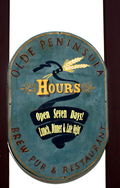
Olde Peninsula is another downtown brewpub featuring a small selection of craft beers to accompany its diverse menu.
Bilbo's Pizza, located on Stadium Drive, also features a microbrewery.
Flavorings
The A.M. Todd Company, one of the lead producers of peppermint oil and other flavorings, is headquartered in Kalamazoo.[20] At one point it supplied 90% of the world's peppermint oil. Many mint plantations once littered the County as part of its operations. Its founder, Albert M. Todd, was elected to the United States House of Representatives for the 55th Congress.
Kalamazoo is also home to Kalsec, another flavorings company, which was founded by Paul H. Todd, Jr., Albert Todd's grandson and U.S. Representative in the 89th Congress. Founded as the Kalamazoo Spice Extraction Company, Kalsec is owned and managed by Todd family descendants.[21]
Historical
In the past, Kalamazoo was known for its production of windmills, mandolins, buggies, automobiles, cigars, stoves, paper, and paper products. Agriculturally, it once was noted for celery and bedding plants. Although much has become suburbanized, the countryside still continues to produce significant quantities of farm crops.
One notable business founded in Kalamazoo was the Gibson Guitar Corporation, which spawned the still-local Heritage Guitars. The company was incorporated originally as "Gibson Mandolin - Guitar Co., Ltd" on October 11, 1902, by the craftsman Orville Gibson. Gibson originally produced some of the finest hand-crafted mandolins. This quality and attention to detail followed into the guitars the company began making later. One model was the Gibson Kalamazoo Electric Guitar. The Gibson guitar is known for its quality and sought after worldwide by professional musicians and collectors alike. Operations were moved gradually from Kalamazoo to Nashville, Tennessee, (Electric Division) and Bozeman, Montana, (Acoustic Division) in the 1980s. Some workers from the original factory stayed in Kalamazoo to create the Heritage Guitar company.[23]
Kalamazoo was once known as the "Paper City" because of the large number of paper mills operating in the city and surrounding area. An example of such an enterprise would be the Allied Paper Corporation, which operated several mills and employed 1300 people in Kalamazoo during the late 1960s. As the forests of West Michigan were logged out, paper mills closed. In 2010 there is only one paper mill left in Kalamazoo, the Graphic Products Corporation on North Pitcher St.
Other notable businesses founded in the city include the Shakespeare Company, a fishing and tackle manufacturer. Early in the 20th Century, Kalamazoo was home to the pioneering brass era automobile company Barley.
Kalamazoo was also headquarters of the Checker Motors Company, the former manufacturer of the Checker Cab, which also stamped sheet metal parts for other auto manufacturers. Checker closed for good June 25, 2009, a victim of the recession.
Life Sciences
The Upjohn Company was a pharmaceutical manufacturing firm founded in 1886 in Kalamazoo that is now part of the Pfizer Corporation. Most of Upjohn's original facilities remain, many have been renovated and some new buildings have been constructed. The presence of these corporations has helped the diversification of the chemistry and biotechnology sector of the area's economy. The bulk of the facilities exist in Portage, Michigan, but many also exist in Downtown Kalamazoo.
Among others, Kalamazoo is home to Kalexsyn, PharmOptima, Ceetox, Metabolic Solutions Development, KAR Labs, Jasper Clinical Research and Development, Innovative Analytics and NephRx corporation. Other related businesses within the Kalamazoo metropolitan area include Eurofins AvTech Laboratories (Portage, Michigan), Bridge Organics (Vicksburg, Michigan), AureoGen Biosciences (Oshtemo Township, Michigan), and MPI Research (Mattawan, Michigan). These firms primarily focus on drug discovery and synthesis, clinical support, and finished pharmaceutical testing. KAR Labs also specializes in environmental testing, in addition to bioanalysis. Many of these companies were founded by alumni of Upjohn and its successors, especially after Pfizer eliminated thousands of jobs at its Kalamazoo and Portage facilities. The presence of these smaller biotechnology firms has helped mitigate the economic effects of Pfizer's downsizing. Several have received startup support from Southwest Michigan First's Innovation Center and grants from the State of Michigan through its Technology Tri-Corridor program.
Michigan State University has a branch of its medical school and several post-doctoral residency training programs in Kalamazoo. Resident training programs in Pediatrics, Internal Medicine, Combined Internal Medicine/Pediatrics, General Surgery, Family Medicine, Orthopedic surgery, Emergency Medicine, Psychiatry, and a fellowship in sports medicine are centered at The Kalamazoo Center for Medical Studies (KCMS) founded by Michigan State University.
The city is also home to the Stryker Corporation, a surgical and medical devices manufacturer.
Kalamazoo has two hospitals, Bronson Methodist Hospital, and Borgess Medical Center.
Research
The W. E. Upjohn Institute for Employment Research, a nonpartisan, not-for-profit research organization, has operated in Kalamazoo since its establishment in 1945. The Institute conducts research into the causes and effects of unemployment and measures for the alleviation of unemployment. The Institute also publishes Business Outlook for West Michigan [24], a quarterly journal that provides economic analysis and forecasts on the West Michigan economy.
Other
Other notable Kalamazoo businesses include:
- The Farmers' Market, located on Bank Street, is open on Tuesdays and Saturdays, May through November. A wide variety of fruits, vegetables, and flowers are sold from stalls by area growers.
- National City (Kalamazoo was formerly the corporate HQ of First of America Bank, which merged with National City Bank in 1997), National City has since been purchased and merged with PNC Bank which still maintains a large corporate building in Texas Township, and several downtown along with branches in the region.
Culture
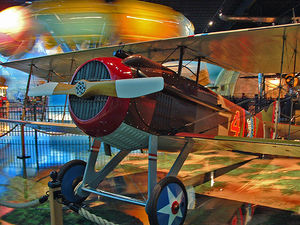
Largely due to its college-town influence, Kalamazoo has always been notable as a center for the arts. Celebrating local artists, the city's Arts Council[25] holds an Art Hop every first Friday of the month, circulating among many local businesses in the downtown area. Big-name stars and groups often perform at the State Theatre, Miller Auditorium at Western Michigan University, and Wings Stadium.
An annual event is "Eccentric Day" at Bell's Eccentric Cafe which celebrates the brewery's Eccentric Ale. The celebration is in December on the Friday marking the end of finals at Western Michigan University.[26]
Despite the name and a Woody Woodpecker cartoon, there is no zoo in Kalamazoo, besides the mentioned aviation museum called the Kalamazoo Air Zoo. The city closed its only zoo in 1974 when the Milham Park Zoo, located within the large city-owned park of the same name, was closed.
Adjacent to Milham Park is the Milham Park Golf Course,[27] which is rated among the best municipal golf courses in the country. Completed in 1936, the 18-hole, par 72 course features a pro-shop and restaurant, and is located entirely within the city limits of Kalamazoo.
In 2002, the Kalamazoo Public Library was awarded "Library of the Year" by Library Journal. The city's library system comprises four branch libraries in addition to its central location, and, until 2010 included a bookmobile system. [1]
Festival
The Kalamazoo Animation Festival International (KAFI) is an organization that encourages and educates animation artists, promotes Kalamazoo's animation industry, and provides community entertainment.[28] KAFI is a project of Kalamazoo Valley Community College. In addition to a biannual festival, KAFI sponsors events such as film screenings and workshops throughout the year. [2]
KAFI's first festival, spearheaded by a local animation artist, drew 235 submissions and nearly 1,000 attendees in 2002. A second festival was held in 2003. Since then, an every-other-year schedule has been adopted, and KAFI has developed into one of the top 20 animated film festivals in the world. The 2007 festival attracted over 500 entries from 37 countries. In addition to an animated film competition with $15,000 in prizes awarded, the festival features events for students, artists, educators, filmmakers and the general public. Past KAFI award winners include Bill Plympton, Karen Aqua, Chris Landreth and John Canemaker.
Museums
The city is home to a number of art galleries, with the largest and most prominent being the Kalamazoo Institute of Arts, which houses over 3,600 works with a focus on 20th-century American art. The KIA regularly houses temporary exhibitions, some of which have drawn tens of thousands of visitors from all over the world.
Downtown is the Kalamazoo Valley Museum, a "hands-on" museum aimed largely at children which also has a planetarium and a nationally recognized Challenger Learning Center. It also features a mural painted by renowned artist James "Jungle" Powell.
Northeast of town in Hickory Corners is the Gilmore Car Museum, which includes cars used in Walt Disney movies.
The Kalamazoo Air Zoo is located just south of town and features several aviation and space exhibits.
Theater
Kalamazoo is home to a number of local theaters and performing groups, including the Kalamazoo Civic Players, New Vic Theatre [3], Fancy Pants Theater [4], Farmer's Alley Theatre [5], and the Barn Theatre [6] in nearby Augusta. Plays and musicals are also performed at Kalamazoo College and Western Michigan University.
There is a growing local improv scene, centered mainly around the groups in Crawlspace Theatre Productions [7] which include: Crawlspace Eviction, Kind of Pretty Women, and t&a. Monkapult, a student improv group at Kalamazoo College, also has regular performances which are widely attended. Members of Monkapult later formed a small improv troupe called Just Panda, which gained recognition throughout the community and held performances in Milwaukee and Chicago.
The All Ears Theatre [8], which invites listeners to return to "the thrilling days of live radio," performs a mix of new and classic works before a live audience. Twelve performances are recorded per year, all of which are later broadcast locally on WMUK.
Music
Kalamazoo has always had a diverse and vibrant music scene. The Gibson Guitar Corporation, originally founded in Kalamazoo in 1902, spurred the musical interests of many local musicians specializing in everything from classical genre, to folk, to modern-rock. The Kalamazoo Symphony Orchestra, [9] founded in 1921, is now a well known world-class orchestra under the direction of Raymond Harvey. The city also plays host to the renowned Irving S. Gilmore International Keyboard Festival, as well as a Bach Festival.
The local and indie music scene has produced pop stars such as RCA recording artists The Verve Pipe, Metal Blade recording artists Thought Industry, Grass Records/RCA recording artists Twitch, Grass Records recording artists Doxie, unsigned heroes Rollinghead, Hell or Highwater, and Knee Deep Shag, among others. Among the uprising is shoegaze influenced band, Glowfriends. The bluegrass and folk scene has developed a great following partly influenced by local acts like Joel Mabus [10], Greensky Bluegrass [11], Great Lakes Grass, The Corn Fed Girls [www.thecornfedgirls.com], The Lonesome Moonlight Trio, Sweet Corn, Who Hit John? [12], and the local NPR show Grassroots. Coopers Glen Music Festival [13] is also a popular music event held annually, previously at the Kalamazoo Nature Center [14] and now temporarily at The Radison Plaza Hotel [15]. The Fretboard Festival, a celebration of Kalamazoo's music scene and it's musical heritage, is held annually at The Kalamazoo Valley Museum [16]. The third annual "Kalamashoegazer" festival was held in August 2009 at The Strutt Bar and Cafe.
The city, with its diverse and multi-ethnic population also has burgeoning world music, hip hop, punk, celtic and blues scenes. Local musicians proud of their city have also written tributes featuring the name Kalamazoo, bringing about greater national recognition of the city, such as "Kalamazoo #12 & 35" by The Corn Fed Girls, "Flypaper" by Micaela Kingslight [17] and "Wanderin" by The Red Sea Pedestrians [18].
Dance

Kalamazoo is home to Boheme Tribal Belly Dance, [19] the area's premiere Tribal Style belly dance troupe. The troupe is under the direction of Sarah Schneider Koning and performs throughout the United States. Their repertoire includes ATS, Tribal Fusion, Gothic Fusion, Punk Raks, folkloric dances of the Middle East, and Raqs Sharqi. Boheme offers classes at a variety of locations throughout southwest Michigan and hosts gala shows, haflas and workshops. Boheme's studio is located at Fire Historical and Cultural Arts Collaborative. [20]
Kalamazoo is also home to the Kalamazoo Ballet Company [21], and Bullard School of Ballet and Highland Dance, founded in 1969 by Therese Bullard, a former principal dancer with Canada's Royal Winnipeg Ballet. The Kalamazoo Ballet Company is a charter member of Mid-States Regional Dance America, and has a repertoire that includes not only such classics as the Nutcracker, Swan Lake, Sleeping Beauty and Cinderella, but also original works choreographed by Ms. Bullard and August Tye, including Dracula and Jane Eyre, as well as award-winning pieces set by Ms. Tye, including Insomnia. The Kalamazoo Ballet Company frequently collaborates with the Dance Department at Kalamazoo Central High School, exchanging dancers to perform specialized roles, and with the Kalamazoo Symphony Orchestra, to provide audiences with the combined artistic experience of music and dance. Members of the company have won the annual Mid-States Regional Dance America annual competition for a full-tuition scholarship to the Joffrey Ballet's eight week summer school program many times, and several members have attended the Royal Winnipeg Ballet Professional School as scholarship students.
Sports
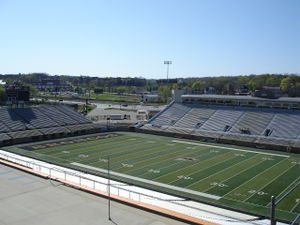
Kalamazoo plays host to four non-collegiate teams:
- The Kalamazoo Kings minor-league baseball team plays games at Homer Stryker Field and is a member of the independent Frontier League.
- The Kalamazoo Wings (aka K-Wings) minor-pro hockey team plays games in Wings Stadium and has played since 1973. The team is currently a member of the ECHL.
- The Kalamazoo Outrage is a soccer club and has men's, women's and junior teams and is a member of United Soccer League, due to play in the Premier Development League as an expansion team in the. On November 14, 2007, the club announced a player development deal with one of England's oldest soccer teams, Sheffield Wednesday a.k.a 'The Owls'. Former USA international team player John Harkes played successfully with the Owls in the 1990s, and current international youngster Frank Simek from St Louis, MO is their current first-choice right-back. In April 2008, Wednesday released youngster Scott Elise to play for the Outrage after the 20yr old graduated from the Owls Academy, further cementing links between the two clubs.
The Western Michigan University Broncos, who compete in the NCAA Division I Mid-American Conference, play at the following on-campus venues:
- Waldo Stadium (football)
- Lawson Arena (hockey)
- University Arena (basketball and Volleyball)
- Hyames Field (baseball)
- Ebert Field (softball)
- Kanley Track (outdoor track and field)
Hyames Field played host to the first two College World Series held in 1947 and 1948. Future U. S. President George H. W. Bush was a first baseman for Yale in the 1947 series.
The Kalamazoo College Hornets and Kalamazoo Valley Community College Cougars also have several collegiate athletic teams.
Kalamazoo is the hometown of New York Yankees all-star shortstop Derek Jeter, Green Bay Packers wide receiver Greg Jennings, and Seattle Seahawks running back T.J. Duckett and J.C Harrison of the Cleveland Browns. Washington Nationals pitcher Scott Olsen Chicago White Sox first baseman and gold glove winner Mike Squires was born in Kalamazoo. Kalamazoo was also the hometown of longtime Detroit Tigers owner John Fetzer, who owned the American League team from 1961 through 1984, when he sold the franchise to Domino's Pizza founder Tom Monaghan.
The United States Tennis Association Boys 18 and 16 National Tennis Championships are hosted every summer by Kalamazoo College. The event, organized completely by local volunteers from Kalamazoo's vibrant tennis community, has seen some of tennis' great stars in years just before they became pro including Jimmy Connors, John McEnroe, Jim Courier, Andre Agassi, Pete Sampras, Michael Chang, James Blake and Andy Roddick.
Kalamazoo is home to the Big League Softball World Series yearly [22]
Local media
Newspapers
Kalamazoo is served by one daily newspaper, the Kalamazoo Gazette.
The main office of Business Review Western Michigan, a business-to-business publication, is located downtown next to the Kalamazoo Gazette.
Located on campus, but completely independent of the university, Western Herald is the morning, weekday, student-run newspaper at Western Michigan University, distributed free of charge on-campus and around the greater Kalamazoo area. Unlike most college newspapers, the Herald is funded entirely by advertising dollars and does not receive any student activity fees or other funding from the university or taxpayers.
Television
WWMT, West Michigan's CBS / CW affiliate, is licensed and operates out of Kalamazoo but serves the entire West Michigan region. The station was originally owned and operated by famous broadcasting pioneer (and former Detroit Tigers owner) John Fetzer, as "WKZO-TV". Along with television, Fetzer introduced Kalamazoo to radio in 1931, when AM 590 WKZO signed on the air. Fezter also created Kalamazoo's first cable television system, then known as Fetzer Cable; it is a predecessor of Kalamazoo's current cable franchise, Charter Communications.
The Public Media Network, located in downtown Kalamazoo, hosts media outlets including Charter cable channels 19, 20, 21, 22, and 95 where daily public access programs are produced and aired to the public.
Kalamazoo is part of the , which also includes Grand Rapids and Battle Creek. Most channels that serve the entire market are receivable in Kalamazoo, including WWMT, WOOD-TV (NBC), WXMI (Fox), WZPX (Ion) and WLLA (religious). Some channels based in the northern part of the market reach Kalamazoo through a satellite or translator, such as WTLJ Muskegon (religious, through W26BX), WGVU-TV Grand Rapids (PBS, through WGVK), and WXSP-CA Grand Rapids (MyNetworkTV, through WOKZ-CA). WOTV in Battle Creek broadcasts ABC programming for the southern part of the market, including Kalamazoo. Charter offers all West Michigan channels on its system to Kalamazoo subscribers, including WZZM, the ABC affiliate for Grand Rapids and the northern part of the market.
Radio
WIDR is the college student-run, commercial free radio station at Western Michigan University. It is known for playing obscure and rarely heard underground music of all styles as well as some local news and talk. Broadcasting 100 watts on 89.1 FM, WIDR can be heard from about a 20 mile radius from campus.
WMUK is also on Western Michigan University's campus. It hosts many local music programs including jazz and classical performances as well as programming from NPR. WMUK broadcasts 50,000 watts in high definition on 102.1 FM.
WKDS is West Michigan's only high school student-run radio station. The station signed on in 1983 at 89.9 on the FM dial, broadcasting from Loy Norrix High School. The call letters stood for Kalamazoo District Schools (now Kalamazoo Public Schools). For most of its history, WKDS broadcasted only during daytime hours and not at all on the weekend. In Fall of 2004, the station began broadcasting 24 hours a day, 7 days a week in an attempt to prevent an outside organization to take over the time WKDS was off the air. WKDS was part of a county wide Education For Employment program for years. The radio station is still owned by Kalamazoo Public Schools although the EFE program has been discontinued. High School students from around the area continue to operate the station.
FM radio stations which serve Kalamazoo include:
- WAYK 88.3 - Kalamazoo - Christian Top 40
- WIDR 89.1 - Kalamazoo - College/Variety
- WKDS 89.9 - Kalamazoo - High School/Variety
- WCSG 91.3 - Grand Rapids - Christian AC
- WZUU 92.5 - Mattawan/Kalamazoo - Classic Rock
- WBCT 93.7 - Grand Rapids - Country
- WTNR 94.5 - Grand Rapids - Country
- WNWN 95.5 - Kalamazoo - Urban Adult Contemporary (translator for AM 1560)
- WLKM-FM 95.9 - Three Rivers - Classic Hits
- WKZO 96.5 - Portage/Kalamazoo - News/Talk (CBS) (simulcast of AM 590)
- WGRD 97.9 - Grand Rapids - Rock
- WNWN-FM 98.5 - Battle Creek - Country
- WBCH-FM 100.1 - Hastings - Country
- WQXC 100.9 - Otsego/Kalamazoo - Oldies
- WMUK 102.1 - Kalamazoo - NPR/Classical/Jazz
- WKFR 103.3 - Battle Creek/Kalamazoo - CHR/Top 40
- WBXX 104.9 - Battle Creek - Adult Contemporary
- WOOD-FM 105.7 - Grand Rapids - Adult Contemporary
- WJXQ 106.1 - Jackson/Lansing - Active Rock
- WVFM 106.5 - Kalamazoo - Adult Contemporary
- WBBL 107.3 - Greenville/Grand Rapids - Sports
- WRKR 107.7 - Portage/Kalamazoo - Classic Rock
AM radio stations which serve Kalamazoo include:
- WKZO 590 - Kalamazoo - News/Talk (CBS)
- WAKV 980 - Allegan/Otsego - Adult Standards
- WKMI 1360 - Kalamazoo - Talk (ABC)
- WKPR 1420 - Kalamazoo - Religious (daytime only)
- WNWN 1560 - Portage/Kalamazoo - Urban Adult Contemporary (daytime only; 24 hour FM translator at 95.5)
- WQLR 1660 - Kalamazoo - Sports (FOX)
Radio Stations from Battle Creek, Grand Rapids, and Lansing are also heard in Kalamazoo.
Transportation
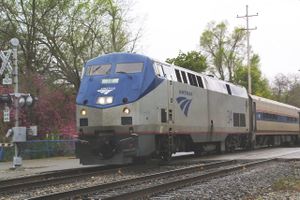
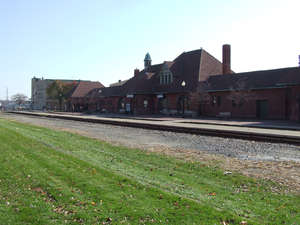
Highways
Interstates
 I-94
I-94 I-94 Business Loop
I-94 Business Loop
U.S. Highways
 U.S. Route 131
U.S. Route 131-

 BUS US 131 traversing downtown Kalamazoo.
BUS US 131 traversing downtown Kalamazoo.
Intercounty Highways
 A-45
A-45
Kalamazoo is served by highways I-94, US 131, M-43 and M-96. It was on the original Territorial Road in Michigan of the 1800s, which started in Detroit and ran to Lake Michigan. Much of that, but not all, later became Old U.S. 12—the "old" designation came about when I-94 was built parallel to it—and also was called Red Arrow Highway after a World War I army division. The name "U.S. 12" was shifted south to what once was U.S. 112 between Detroit and Chicago. Some parts of Old U.S. 12 outside of town, especially in Van Buren County and Berrien County to the west, are still called Red Arrow Highway. The term "Old U.S. 12" has faded from use.
Rail
- Kalamazoo has rail service provided by Amtrak, with the station located downtown and combined with a newly renovated bus terminal.
- Kalamazoo also has a freight service provided by Grand Elk Railroad running north to Grand Rapids, Michigan and south to Elkhart, Indiana. The line they lease was a former Grand Rapids and Indiana Railroad mainline.
Bus
- Bus service to and through the city is provided by Greyhound, Indian Trails and [the kalamazoo trolly].
- Public bus services within the city are provided by Metro Transit.
Air
- On the southern end of the city is the Kalamazoo-Battle Creek International Airport, which offers flights on various airlines to hubs and leisure destinations.
Other
The Kal-Haven Trail, heavily used by cyclists and snowmobilers, extends to downtown Kalamazoo. It runs 34 miles (55 km) between South Haven, Michigan, to a trailhead just west of Kalamazoo. Between that trailhead and South Haven the trail is run by Van Buren County, even the parts within Kalamazoo County. A trail pass is required.
The section east of the trailhead was opened in 2008 and extends to downtown Kalamazoo. It's known as the Kalamazoo River Valley Trail and is run by Kalamazoo County. No pass is required on that section.
Sister cities
The city of Kalamazoo, Michigan has three sister cities.
 Kingston, Jamaica
Kingston, Jamaica Numazu, Japan
Numazu, Japan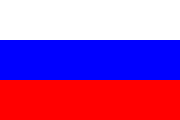 Pushkin, Russia
Pushkin, Russia
Kalamazoo in popular culture
There are numerous songs that reference the city name in song lyrics and title, including: "All Over The World" by Rascalz[29]; "Down on the Corner" by Creedence Clearwater Revival[30]; "I've Been Everywhere" by Hank Snow[31] and Johnny Cash[32]; "(I've Got a Gal In) Kalamazoo" by Glenn Miller[33] (1943)(Nominated: Best Music, Original Song in Academy Awards Harry Warren (music), Mack Gordon (lyrics); "Kalamazoo" by Ben Folds Five[34]; "Kalamazoo" by Primus[35]; "Kalamazoo" by Luna[36]; and "Kalamazoo" by Mike Craver on his album "Shining Down".[37]
The word also features in the opera Einstein on the Beach by Philip Glass.[38]
An indie film, Kalamazoo?, features the city as a backdrop[39]. Kalamazoo is mentioned in the 2010 Disney Channel Original Movie "StarStruck" as the hometown of the main characters.
See also
- People from Kalamazoo, Michigan
- Kalamazoo Department of Public Safety
Notes
- ↑ 1.0 1.1 "American FactFinder". United States Census Bureau. http://factfinder.census.gov. Retrieved 2008-01-31.
- ↑ "US Board on Geographic Names". United States Geological Survey. 2007-10-25. http://geonames.usgs.gov. Retrieved 2008-01-31.
- ↑ Table 1. Annual Estimates of the Population of Metropolitan and Micropolitan Statistical Areas: April 1, 2000 to July 1, 2008
- ↑ 4.0 4.1 "The History of Kalamazoo MI". Living in Kalamazoo. http://www.kalamazoomi.com/hisf.htm. Retrieved 2006-06-20.
- ↑ "Yes, there really is a Kalamazoo" t-shirt, at Kalamazoo Chamber of Commerce.
- ↑ Dunbar, Willis (1995). Michigan: A History of the Wolverine State. Grand Rapids, MI: Wm. B. Edermans. pp. 10–12. ISBN 0802870554.
- ↑ "Michigan Centennial History". http://www.rootsweb.com/~mikalama/centhist1.htm. Retrieved 2007-06-07.
- ↑ "Kalamazoo's First Residents: Our Native Americans". Kalamazoo Public Library: Local history. http://www.kpl.gov/collections/localhistory/allabout/general/Indians.aspx. Retrieved 2007-06-07.
- ↑ "Michigan Centennial History". http://www.rootsweb.com/~mikalama/centhist1.htm. Retrieved 2007-06-07.
- ↑ "Titus Bronson: Founder of Kalamazoo". Kalamazoo Public Library: Local history. http://www.kpl.gov/collections/LocalHistory/AllAbout/biography/TitusBronson.aspx. Retrieved 2006-06-20.
- ↑ History of Kalamazoo.
- ↑ "Kalamazoo 1980 Tornado". Kalamazoo County, Michigan, Genealogy and Local History. http://www.rootsweb.com/~mikalama/tornado.htm. Retrieved 2006-07-30.
- ↑ Al Sabo Preserve
- ↑ Marsh
- ↑ "City Commission". City of Kalamazoo. http://www.kalamazoocity.org/portal/government.php?page_id=33. Retrieved 2007-07-07.
- ↑ "Hopewell sworn in as Kalamazoo mayor - News". Western Herald. http://media.www.westernherald.com/media/storage/paper881/news/2007/11/14/News/Hopewell.Sworn.In.As.Kalamazoo.Mayor-3099072.shtml. Retrieved 2007-12-08.
- ↑ "Intel Most Unwired College Challenge". http://www.intel.com/pressroom/archive/releases/2005/20051011corp.htm. Retrieved 2010-06-13.
- ↑ "Affordable College for All". CBS, Katie Couric. http://www.youtube.com/watch?v=5nYI9FMz-sU. Retrieved 2007-02-07.
- ↑ Bell's Brewery/
- ↑ http://www.amtbotanicals.com/
- ↑ Kalsec
- ↑ "Welcome to Saskrailmuseum.org". Contact Us. September 11, 2008. http://www.saskrailmuseum.org/. Retrieved 2008-10-03.
- ↑ Heritage Guitar Inc
- ↑ West Michigan Data Center/Business Outlook
- ↑ Kalamazoo Arts Council
- ↑ Eccentric Ale Day
- ↑ Milham Park golf course
- ↑ Kalamazoo Animation Festival International
- ↑ Lyrics, "All Over The World" by Rascalz
- ↑ Lyrics, "Down on the Corner" by Creedence Clearwater Revival
- ↑ Lyrics I've Been Everywhere" by Hank Snow
- ↑ Lyrics, "I've Been Everywhere" by Johnny Cash
- ↑ Lyrics, Glenn Miller "I've Got a Gal in Kalamazoo".
- ↑ Lyrics; "Kalamazoo" by Ben Folds Five.
- ↑ "Kalamazoo" by Primus
- ↑ Lyrics, "Kalamazoo" by Luna
- ↑ Mike Craver Kalamazoo.
- ↑ Phillip Glass and Einstein on the Beach
- ↑ Film Kalamazoo? at IMDB
External links
 |
Grand Rapids |  |
||
| Benton Harbor | Battle Creek | |||
| Three Rivers
Image=Flag of Michigan.svg |
|
|||||||||||||||||||||||
|
||||||||||||||||||||||

